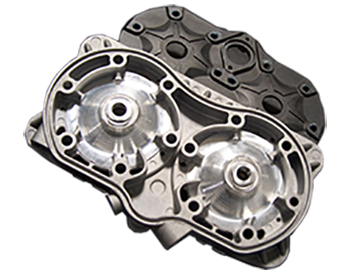
DOES ADDING TORQUE/HP TO YOUR ENGINE ADD STRESS ON INTERNAL COMPONENTS OR LESSEN THEIR LONGEVITY?
OK, we hear from our, most trusted, sources how ANYTIME you add power to your engine, that the components will be under more stress and fail earlier than before!
IS THIS ALWAYS THE CASE?
Let's dive into a few scenarios and find out! NOTE: I will TRY and keep this short and to the point. So, some "liberties" may be taken. This is NOT meant to be a "FULL DIVE" into the Physics behind what can occur internally in an engine.
We know that, anytime, you add power to an internal combustion engine (ICE), Internal HEAT will, most likely, increase as well.
Which areas of the ICE are subjected to this heat increase can, and will vary with how the power was added. It is common for this heat to manifest itself in the form of higher piston and combustion temps. Other internal components/processes can also be "blessed" with this added heat.
BUT is this always the case and is this HEAT causing a decrease in component "life"?
OK..This can, and does, depend on the APPLICATION of the ICE!! Let's roll through a few examples. We will assume that all these examples had power added to them over their stock configuration.
EX #1--> You have an engine that is used only under high load conditions (ie. sand dune hill climber, asphalt racer etc. etc.) Meaning.. this engine is taxed with heavy loading and tasked to run at, or close, to peak power output (max power).
It is safe to assume, because of this ICE's heavy loading and peak power output running, that its internal components (ie. piston, bearings, etc.) can suffer less longevity over this same engine in stock form.
NOTE: this does not always mean that these components are under "excessive stress" vs stock loads.
This is determined on how the ICE was designed with respect to loads etc.
Some engines/components will suffer more than others when more pressure is applied via power increases. MANY will not suffer at all!
It is all relative to the engine's initial design.
EX #2--> You have an engine that is, RARELY, tasked with any heavy loading nor held for any sustainable time at peak power output.
These could be your Enduro engines, Trail riders, Trials riders etc. type applications.
The "POWER" added was ,mainly, at the low and mid RPM bands (where the engine is operating at a LOW Efficiency and low power output.
For example-> you have a 50HP (at 8200 RPM) Enduro Bike and you trail ride it mainly at part throttle and lower,than peak, RPM (ie. operated in the 5000-6500 RPM range under low load and, mostly, part throttle running)
The added power allows the engine to run lower (than stock) RPM and produce the same (or higher) power.
Let's clarify this scenario a bit--> When one is riding a trail system, one will ride at a power output (HP or Torque) that favors the trail conditions and rider's ability.
For example, a rider running on Trail "A" is comfortable riding at a 28HP engine output on this trail. So, NO MATTER, which bike he/she is riding, he/she, will be riding at this 28HP output on this trail because that is the "comfortable zone" for the rider.
OK, here is where it gets interesting--> No Matter which engine is "under" the rider, it will be producing the 28HP output! The RPM at which ANY engine produces the 28HP can, and does, vary. In this case, let's stick with 1 rider and 2 ,same, 300cc single cylinder engines to continue this example.
We can label these engines "A" and "B". Engine "A" will have engine modifications that increase the Low and Mid RPM band power over Engine "B" that is stock. Engine "A" produces the 28HP at 5400RPM. Engine "B" produces the 28HP at 6000 RPM.
OK--> is the added power on Engine "A" applying more stress on its internal components at than Engine "B" at stock power output?
Since Engine "A" is producing the 28HP at a LOWER RPM than Engine "B", one could make the argument that Engine "A" (with its increased power output) is, actually, applying LESS stress on its components than Engine "B" due to the fact that it is operating at at MUCH lower RPM. Remember, BOTH engines are operating at the same 28HP output, but Engine "A" is doing it with LESS RPM.
This is just one scenario where the engine could be under less internal stress as a result of a higher power output at the same RPM.
Again, the application is the determining factor here.
So, making the "blanketed" statement that ANY engine that is producing more power is under more stress and longevity of its components will be shorter is simply not accurate IMO.
We will stop here since this article is already a bit long!
Hopefully, it cleared up a few misconceptions?


